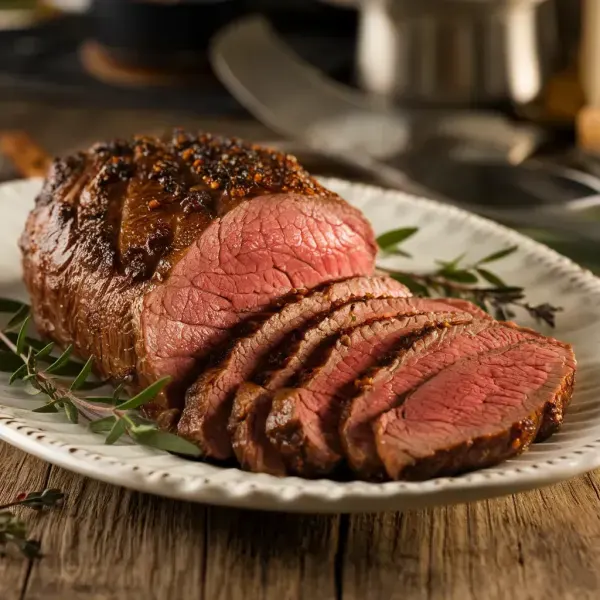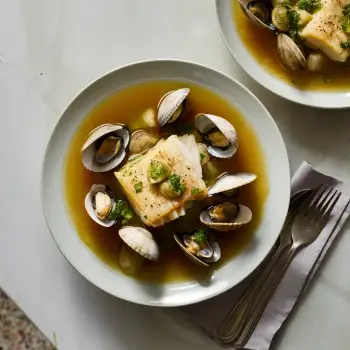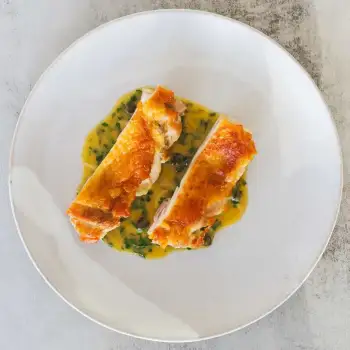
 145 minutes
145 minutesA perfectly cooked beef tenderloin with a caramelized crust, enhanced with flavored butter for an extra burst of flavor.


Center-cut Beef Tenderloin Châteaubriand, trimmed
0 lb
teaspoons
Coarsely Ground Pepper
teaspoons
Unsalted Butter, softened
tablespoons
tablespoons
Flavored Butter
tablespoons
1. Tie the Beef Tenderloin
Tie the beef tenderloin using kitchen twine. Tie it crosswise at 1.5-inch intervals with 12-inch lengths of twine to ensure it holds its shape during cooking. Season the tied roast evenly with kosher salt, then cover it loosely with plastic wrap and let it rest at room temperature for one hour.
2. Preheat the Oven
While the meat rests, preheat your oven to 300°F (149°C) and make sure to adjust the oven rack to the middle position.
3. Prepare the Tenderloin
Once the tenderloin has rested, pat it dry with paper towels. Sprinkle it with coarsely ground pepper and spread the softened unsalted butter evenly over the surface.
4. Roast the Beef
Place the prepared roast on a wire rack set in a rimmed baking sheet. Roast the beef in the preheated oven until it reaches an internal temperature of 125°F (51.67°C) for medium-rare, which should take about 40 to 55 minutes, or 135°F (57.22°C) for medium, which will take about 55 to 70 minutes. Flip the roast halfway through to ensure even cooking.
5. Sear the Beef
Once the roast has reached your desired doneness, heat vegetable oil in a 12-inch skillet over medium-high heat until just smoking. Sear the roast on all sides until it's well browned, about 4 to 8 minutes.
6. Rest and Serve
After searing, spread 2 tablespoons of your chosen flavored butter over the top of the roast and let it rest on a carving board for about 15 minutes. Remove the kitchen twine and slice the tenderloin crosswise into 0.5-inch-thick slices. Serve with the remaining flavored butter on the side.
Before finishing the beef in the oven, brush it with a mixture of Dijon mustard and brown sugar for a sweet and tangy crust.
A thick-cut salmon fillet can also be cooked to achieve a caramelized exterior. Crisping the skin side first and then finishing the fillet in the oven will give that sought-after crust while keeping the interior moist.
Pork tenderloin can be prepared using the same method, adjusting the cooking time as pork tends to cook faster. You could use a spice rub with flavors like smoked paprika, cumin, and brown sugar to complement the pork's natural sweetness.
Coat the beef tenderloin with a mixture of finely chopped fresh herbs such as rosemary, thyme, and parsley mixed with olive oil before searing.
Lamb loin or rack of lamb can be treated similarly, with a crust of herbs such as rosemary, thyme, and garlic to enhance the lamb's robust flavor. The searing and oven-roasting technique will yield a perfectly cooked, tender lamb with a flavorful crust.




Comments (0)